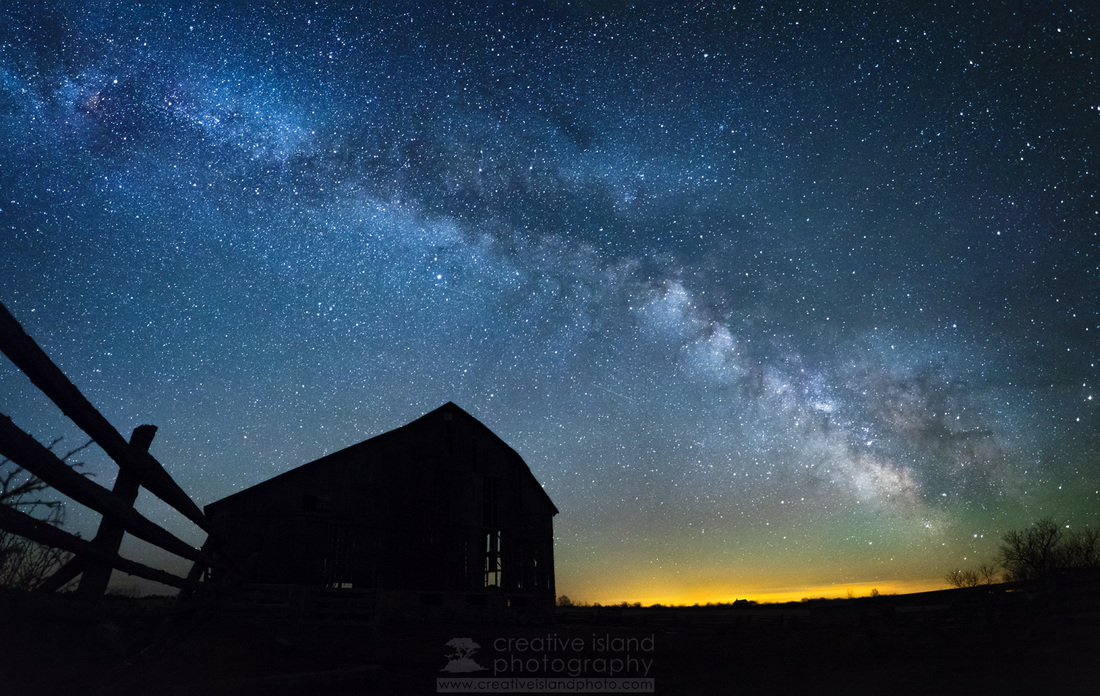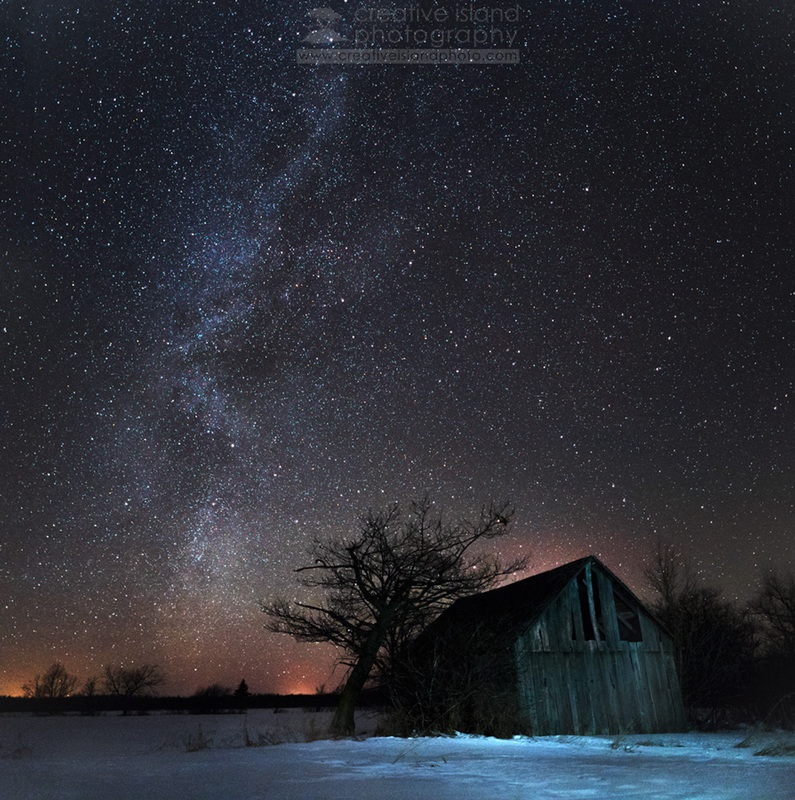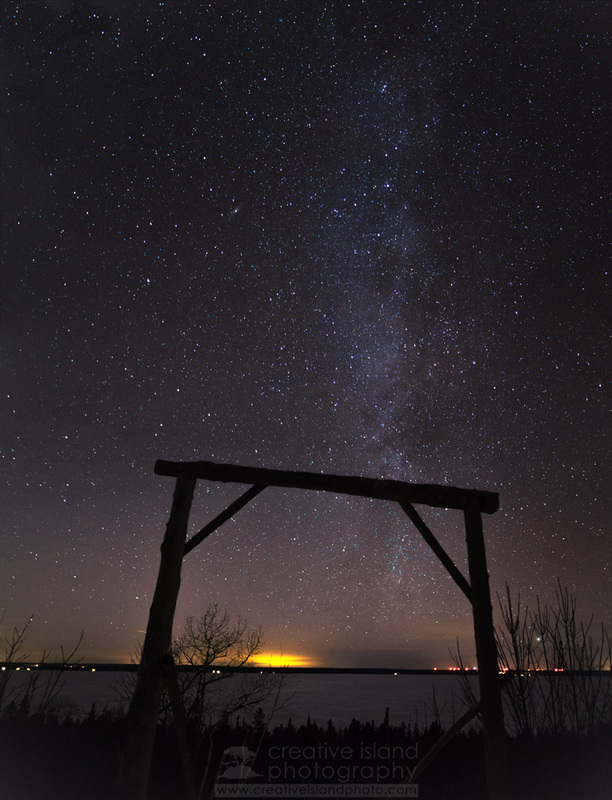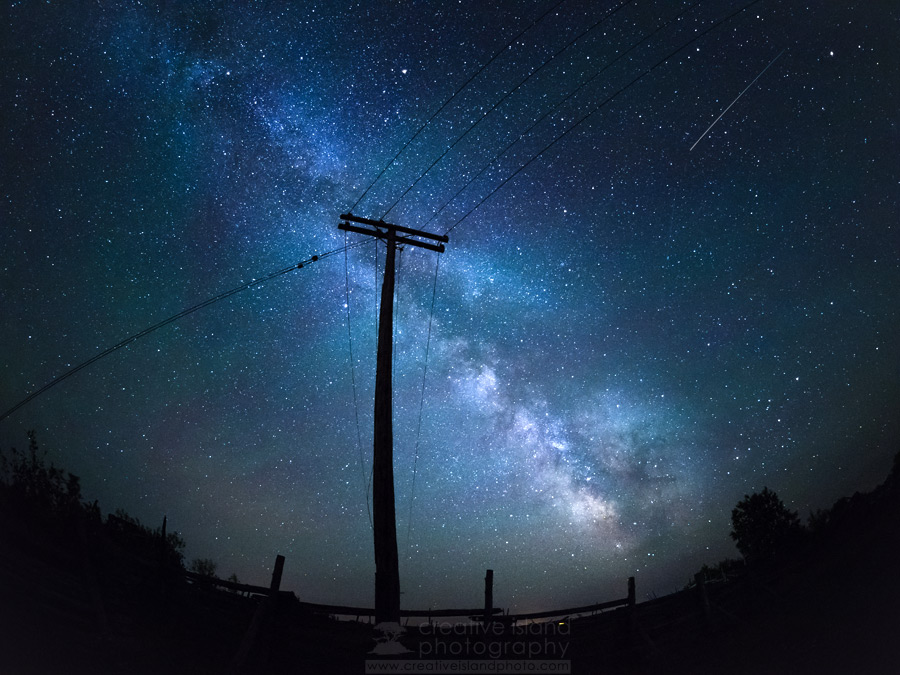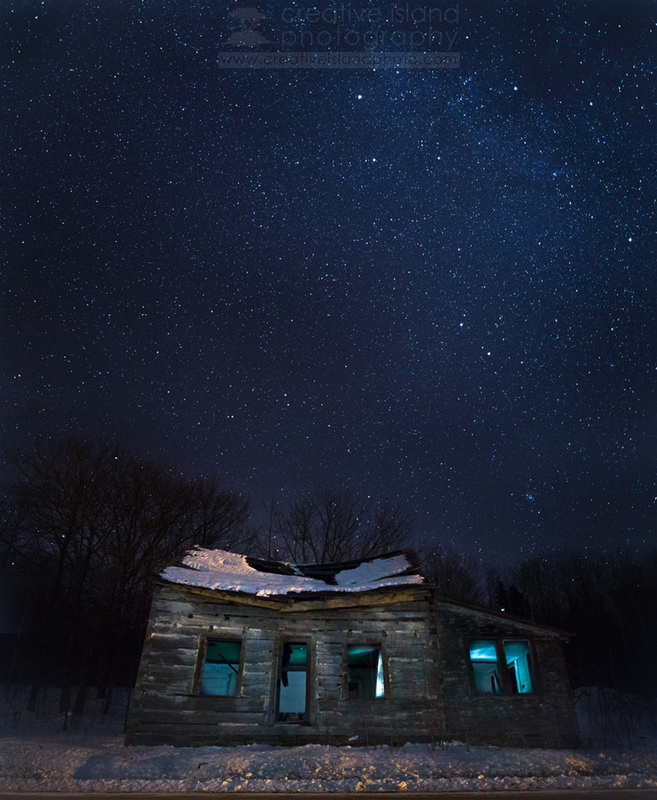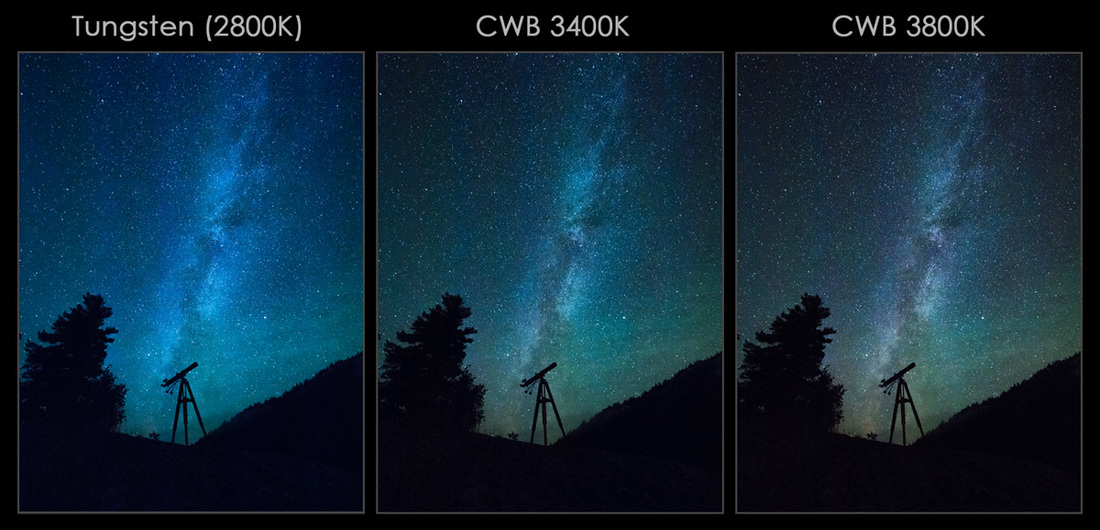|
Space has always held fascination for me. In my youth I loved Star Trek, Star Wars and Battlestar Galactica. I have also lived most of my life in locations with little to no light pollution thereby allowing unencumbered viewing of the night sky. Photographing the stars however has always seemed out of reach. Until now. Like many landscape photographers I would turn off my camera when the sun went down. As I strive to expand my knowledge and skills in the craft of photography, shooting at night seemed a natural area to explore. Being a relative novice in this area I quickly discovered that to achieve good results a number of stars must align properly (pun intended). Aligning the Stars Photography and frustration often go hand-in-hand as you try to create the image that you see in your mind's eye. I have had my fair share of that frustration in my night-sky experiments. The following tips might help alleviate some potential frustration for you. Environmental Considerations
Composition
Camera Settings
22 Comments
4/23/2015 01:23:37 am
Love, love, love your night time photography. Your talent is amazing, we are huge fans of your work and since we have a dark sky preserve would like to collaborate with you. We need to talk, are you available to come for coffee sometime?
Reply
Sharon
8/15/2015 10:39:39 am
Thank you. This has helped it make more sense. No points for guessing what I am off to do on the next clear night!
Reply
Mark
9/3/2015 10:52:27 pm
This article is a big help to me. I'd like to try some astrophotography at the Grand Canyon. I have an EM1 and 12-40mm f2.8 lens. I can't tell which shots you may have used the 12mm prime vs. the 12-40mm zoom. For the zoom, in order to keep the speed less than 25 secs to avoid blurring, you would need ISO around 6400, right? Did you find that the EM1 shots were acceptable with this combo?
Reply
Ian
11/1/2015 02:52:36 pm
I would leave in camera NR off and do it in post. Can save a lot of time in the field.
Reply
Peter
11/1/2015 03:34:06 pm
Thanks for the comment, Ian. I certainly don't disagree, but for many people just getting in to astrophotography I think it is simpler to let the camera handle the noise reduction. Cheers!
Reply
Thorsten
1/6/2016 05:26:19 am
Thanks for this Post. It's an awesome guide for me because I haven't done any Astro shots yet, but while reading this post I directly double checked the weather conditions here in Germany. Time for some clear nights here ;)
Reply
Peter Baumgarten
1/6/2016 08:41:05 am
Hi Thorsten,
Reply
Hey there,
Reply
Peter
9/18/2016 09:33:42 am
Hi Tobias,
Reply
Hi Peter,
David Runyard
9/3/2018 02:52:32 am
This only works (on the E-M1) if <Reset Lens> is set to 'ON' (<Gear> <A> <Reset Lens>)
JOSE ZARCOS PALMA
12/8/2016 06:32:55 pm
Dear all
Reply
Kerren
11/4/2018 01:00:17 am
That's really helpful, Jose. Thanks
Reply
Reid
9/17/2017 02:02:07 pm
Reply
12/12/2017 11:21:39 pm
Peter,
Reply
Andrea
2/22/2019 04:58:50 pm
Hi Peter , thank you for the great post.
Reply
Peter Baumgarten
2/22/2019 05:39:34 pm
Hello Andrea,
Reply
Andrea
2/23/2019 06:02:40 am
Thank you Peter. I asked because in my old Canon 5d Mk2 I usually disabled the IS on the len on a tripod. And I was curious to understand if there is this need in with olympus and in body IS. Thank you for your answer.
Andrea
2/23/2019 06:08:37 am
After my previous replay, I checked my omd em5mk2 manual and, at page 57, it suggests to "When using a tripod, set [Image Stabilizer] to [OFF]." Just for information.
Barry
9/13/2019 11:38:52 am
Thanks for the tutorial. Do you use dark frame subtraction even if you are going to stitch a panorama?
Reply
11/21/2020 08:25:52 am
Hi Peter!
Reply
Leave a Reply. |
AuthorPeter Baumgarten is a professional photographer and educator. He is also an Olympus Visionary and NiSi Official Photographer. Categories
All
|
